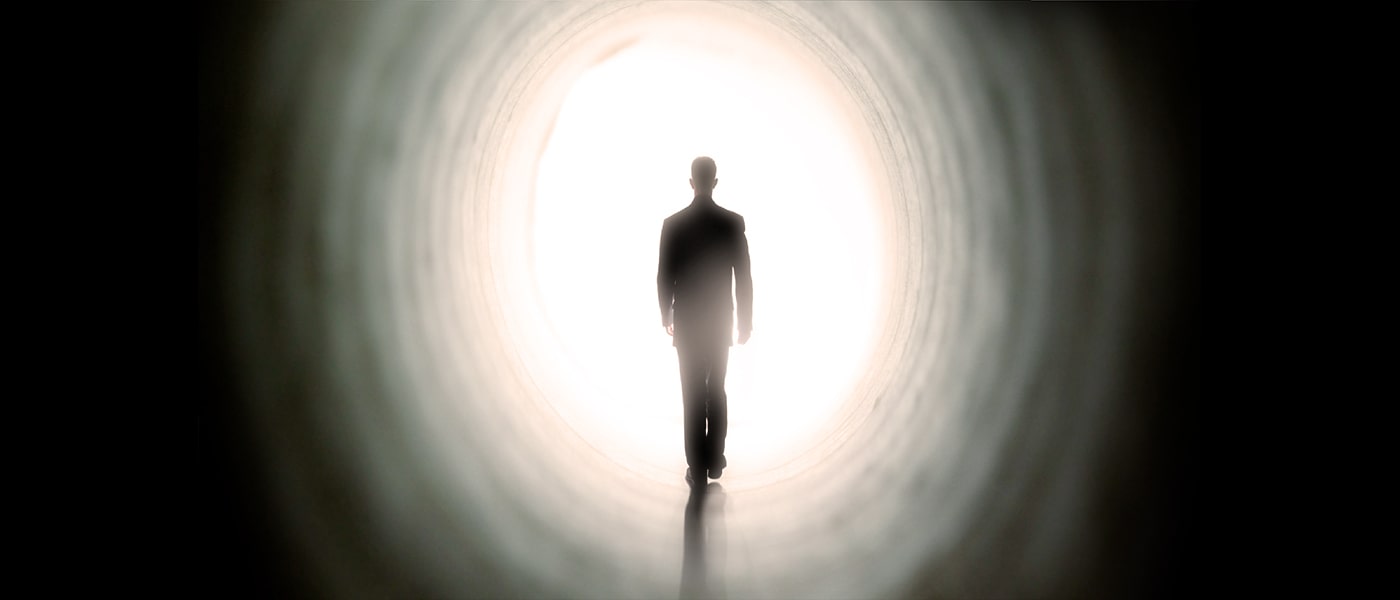

12 Scientific Facts in The Quran Discovered Centuries Later: Part 1
One of the issues emphasized in Islam, and the Quran is contemplation and reflection. Human beings are created to worship Allah almighty, yet praising Him is not restricted to religious rituals and practices. According to Imam Hasan Al-Askari (AS), worship is contemplating on Allah Almighty's affairs [1]. It means being mindful of the signs of Allah Almighty, pondering about them, and realizing how powerful He is. Some of these signs are mentioned in the Quran (2:164), of which some have been discovered as scientific facts many centuries after the revelation of the Quran. Here, we review some of these facts.
1. Adornment of the Lowest Sky: Stars
In Surah Saffat, it is stated that: "Indeed We have adorned the lowest heaven with the finery of the stars." (37:6). The lowest heaven means the nearest sky that we observe from the earth. The Quran introduced this fact, while in that era, the accepted hypothesis was that the fixed stars existed only in the highest sky (the 8th sky, according to Claudius Ptolemy's hypothesis). Nowadays, it is also known that as light passes through pockets of the earth's atmosphere, it is affected by winds in the atmosphere and by areas with different temperatures and densities. It is, therefore, diffracted (bounced around), causing a quick apparent dimming and brightening when looking from the ground. This phenomenon perfectly fits the term "lower heaven," while out of earth's atmosphere, it doesn't happen.
2. Every Star Moves in its Proper Path
In Surah Waqi'ah, it is said that: "So I swear by the places where the stars set! And indeed, it is a great oath, should you know." (56:75-76).
Today, we know that each star holds a proper position in the sky, and its path and orbit depends on gravity. The velocity of each is also specific. Although exact calculation about the stars too far away is not possible, the measurements done for the stars of the Milky Way Galaxy confirms these facts.
3. Sun's Orbit according to the Quran
In 1512 AD, the astronomer Nicholas Copernicus put forth the theory that the sun is at rest near the center of the universe and that the earth, spinning on its axis once daily, revolves annually around the Sun [2]. This belief that the sun is motionless was not acknowledged by astronomers until the 20th century. That's while in the Quran, it is mentioned that: "And the sun runs on to its place of rest. That is the ordaining of the All-mighty, the All-knowing." (36:38).
This Quranic account of the sun's motion is consistent with modern Astronomy because the mentioned Copernicus's theory is not valid anymore. Instead, it has been well-established that the sun is not stationary, but is moving in its orbit around the center of Milky Way Galaxy.
4. Universal Gravitation
Today, it is known that the gravitational forces hold the celestial bodies apart from each other, hence, preventing their collision [3]. This fact was explicitly stated in the Quran: "It is Allah who raised the heavens without any pillars that you see" (13:2), and: "He created the heavens without any pillars that you may see" (31:10). According to these verses, there exist invisible supports that raise the heavens. These supports are now referred to as the gravitational and other unseen forces in the universe [3].
Some of the astronomical facts discussed in the Quran and were discovered later on by scientists were described above. There remain still other points presented in the second part of this topic. Follow us to find out more.
References:
- Muhaddith Nuri, "Mustadrak al-Wasa'il," vol. 11, p. 183.
- Quran
- Scientific
Share This Article

Ethics and Religion, how are they Related?
Morality includes ethics or moral philosophy, and offers human beings the proper way to spend their lives. These etiquettes suggest the ideals and principles we should aim to achieve, morally commendable actions, and what is considered immoral. Religion may be described as a belief system that elevates people's lives and affirms the presence and ultimate dominance of a spiritual, supernatural, omnipotent divinity that transcends the material realities of day-to-day life. Ethical principles and religious tenets share some ground but do not correspond exactly. Most – but not all – faiths give their adherents ethical instruction. Much, but not all, moral philosophy has its origins or linkages in religious belief.
What do we mean when we refer to religion?
It is challenging to provide a specific definition of "religion" since the term "religion" is susceptible to various interpretations and understandings. On the other hand, religion may be seen as an organized body of ideas and rituals rooted in a common worldview.
This worldview often consists of a consensus on a set of moral principles and an understanding of the meaning of various religious texts. A feeling of connection and identity may also be provided to those who subscribe to a particular religion.
In addition, religion may be understood as the belief in and worship of a superhuman, governing authority, most prominently a personal deity or gods. This is one comprehensive definition of religion. It is often connected with rites, and it may also entail the reading of holy books.
What exactly is ethics?
The subject of how a person ought to conduct their life is at the center of the study of ethics, a subfield of philosophy. It seeks to give a framework for ethical decision-making by posing the question, "What is the proper thing to do in this specific situation?" and attempting to provide an answer.
Throughout the course of human history, a great variety of ethical theories have been proposed; nonetheless, no one response is universally accepted to all ethical concerns. Rather, various individuals are likely to arrive at different conclusions depending on the principles and ideals that are most important to them.
The ethical tradition significantly focuses on applying moral principles in everyday life. Instead of providing instruction on how to live a good life in the abstract, ethics aims to offer direction on how to live a decent life in the actual world.

Relation of Ethics to Religion
The history of the connection between religion and ethics may be told via how religion connects to applying practical experience and analytical thought to investigate morality. A significant number of people who participate in religious activities believe that they do not need to comprehend the rationale behind the moral teachings of their specific religion since all they need to know is what God considers morally acceptable. They are not concerned with the rationale behind why some actions are ethically commendable while others are disapproved by society. However, this rejection of critical thinking may impede persons who feel this way from properly knowing all of the particulars of their faith.
Various perspectives exist on the relationship between religion and ethics, from the notion that religion is the ultimate cornerstone of ethics to the view that ethics is built on humanism principles justified primarily and often only by appealing to reason. These two extremes are often discussed in a manner that leaves little possibility for compromise or pragmatic answers to real-world problems; as the Prophet Muhammad says: " The best of you are those who have the most excellent morals."
The merciful religion of Islam
This presentation of Islam's ethical framework is made in the context of Shariah, the Islamic social and legal order. Whatever promotes one's or society's well-being is ethically desirable in Islam, whereas whatever causes harm is immoral. Islam's ethical framework is the bedrock of a society based on the religion's teachings, deemed divine and unchanging. Regarding personal relationships, business dealings, social gatherings, and public appearances, Muslims are expected to exercise extreme caution following Islamic ethics.
Who exactly is Muhammad?
Muhammad was born in Makkah in 570, while Christianity was still a relatively new religion in Western Europe. His parents had passed away before he was born, leaving him in the care of his revered Quraysh uncle. When he was older, people sought him out as an arbitrator because of his reputation for honesty, kindness, and sincerity. Historians have remarked on his equanimity and quiet demeanor.
Muhammad was a very pious man who had always disapproved of the corruption that pervaded his culture. Occasionally, he would go to the Cave of Hira, located on the slopes of Jabal al-Nur, also known as the "Mountain of Light," not far from Makkah, and meditate there.
Ethics Without Religion
Even if a significant amount of moral philosophy derives from religious belief, the history of secular ethics may be traced back to ancient times. Many philosophers throughout history have belonged to some religious belief system, and acknowledged that it is impossible to live a happy life outside the influence of religion.
Both ethics and religion presume that the soul is immoral
Similarly, ethics imposes the need that the soul to be eternal. Although human existence is brief and constrained, the ideal of ethics is vast and unbounded. It is unlikely that it will realize its potential in its limited lifetime. The only way to achieve one's ethical goal is to live an infinite number of lives in succession.
Single life cannot sate the unbridled need of a human being for the comprehension of truth, appreciation of beauty, and fulfillment of their potential. A person's moral behavior throughout life may show the soul's immortality.
In this manner, ethics and religion lead man along the paths of choice and emotion to the ultimate good, beauty, wisdom, and total perfection God is. Both are impressive to one another, and both are necessary for the growth of the human person.
Conclusion
There is a noticeable gap between religious beliefs and moral principles. ethics is grounded in the application of reason. In writing this article, we aimed to clarify the distinction and similarity between these two ideas.
references
- https://classroom.synonym.com/the-concept-of-evil-in-islam-12085675.html
- https://plato.stanford.edu/entries/religion-morality/
- https://www.shareyouressays.com/knowledge/what-are-the-relationship-between-ethics-and-religion-explained/113112
- https://www.shareyouressays.com/knowledge/what-are-the-relationship-between-ethics-and-religion-explained/113112
Read More

Afterlife
As other axioms, the afterlife (Ma’ad) is one of the first requisites for stepping into the religion of Islam and is defined as the existence of another world that creatures enter after their death, where they experience eternal life. It is noteworthy that the belief in receiving revelation and prophethood (Nubuwwah) builds the foundation of this axiom; in other words, one cannot find acceptance in the afterlife unless he comes to faith in prophethood and more importantly, monotheism (Tawhid).
Nevertheless, prophets didn’t come to impose the idea of Ma’ad on their followers, rather led people’s mind to ponder on this issue and recognize its validity. The reason for this concept to be considered as an axiom is that Islam not only wants us to have faith in the afterlife dependent on the belief in prophethood but also through individual and conscious investigation.
How to Find Faith in the Afterlife?
Aside from revelations that prophets received, there are some other ways and proofs for coming to believe in the afterlife which is the result of the intellectual and scientific efforts of human beings, including the knowledge of God, the universe, and human soul. Here we will briefly introduce each of these ways.
1. God’s Attributes
This argument which is based on the axiom of monotheism (Tawhid) -God exists and is the only one and should be accepted through rational thinking -, claims that God cannot be considered perfect and wise unless we believe in the existence of a world beyond this material world, an afterlife. In other words, without afterlife, the whole creation will become meaningless and vain.
If we find a wisdom governing the universe, then it necessitates the existence of another world which complements creation and forms a part of it. But why? We justify this issue based on God’s attributes.
Divine Justice
God is just and has built the foundation of the universe, heaven, and earth on Justice. Human’s life, also, is placed within this just order; therefore, God’s justice requires every creature to be endowed with what they deserve in order to avoid denying their right.
The reward of many good deeds is not obtained in this world, just as many sins that cannot be punished thoroughly during this earthly life. Accordingly, since this world is limited and does not have the capacity to provide human beings with their deserved rewards or punishments, another world with infinite and unlimited time must exist in order to make up for the rights that people have not acquired in this world.
Divine Wisdom
Wisdom is attributed to one whose deeds are always purposeful and would result in a specific and clear goal. Therefore, the wise God does not commit any absurd or nonsensical deed, otherwise, his action would be the result of his ignorance and lack of knowledge.
Moreover, the creation will not be meaningless, if it leads to eternity; if the creatures have been created for eternity and permanent endowment from God, then it shows an existence – as opposed to nothingness, inexistence – and continuity, thus it would not be absurd.
In addition, he has created every creature for a special purpose and has provided them with the means of reaching it. If He has endowed them with certain desires and capacities, then surely He has anticipated the appropriate answer for them, too.
For instance, in response to the urge for thirst or hunger in animals, He has created water and food in order to satisfy this need of them. Similarly, He has bestowed upon human beings the desire for immortality and eternal perfections; most of us feel the urge for eternity and unending life, as well as everything good in its best way.
If there were no way of reaching these desires, then why would God have placed them in human beings? These feelings do not fit into this earthly life and cannot be satisfied here; our All-wise God has for sure devised a plan for mankind to fulfill these needs, that is creating a world where they are able to experience everlasting life and achieve what they long for in their perfect forms.
2. Universal Phenomena
Looking around, we can find many instances that remind us of the Resurrection and the revival of human beings in the afterlife. The very first thing that comes to mind when we think about the creation of the universe, is that the same power and wisdom that has created this world also has the power and ability to create another one. When we compare this power to our own capabilities, the occurrence of the afterlife seems far-fetched, however by the omnipotent being who has brought this world into life, this act is not at all infeasible.
Moreover, we are faced with many incidents in this world, on a daily basis, which is fairly similar to what will happen in the afterlife; we have seen them so many times that we have got used to their happening and consider them typical and insignificant, however at a closer look, we can find out the systematic and repeated order that governs the universe.
We constantly experience the cycle of life and death in nature with the change of seasons, that with the coming of winter and autumn everything - trees, flowers, etc. - on earth seems to be dying, and by spring, the sky sends its drops of rain to awake the hibernating earth and bestows a new breath on it.
Considering God’s power, the afterlife thus is neither impossible to happen nor something beyond our understanding or illogical based on the events that take place in the universe.
3. Human Being’s Soul
What we as human beings consider as our “self” or “I” is in fact a fixed and permanent fact. This “I” is actually the soul in mankind which is an immaterial and unchanging reality and has every action of the body under its control.
The axiom of the afterlife cannot be accepted unless one has a belief in the existence of a soul in human beings independent of their body, which is responsible for their conscious choices and deliberate actions. Otherwise, the belief in the afterlife is not possible, since if we see human beings as only this body that would be destroyed and diminished by death, then we cannot expect them to be revived exactly as the same; the human being that will be brought to life again would be for sure a different creature.
The only valid assumption would be that when a person dies his soul continues to exist until it returns to the body. Accordingly, the issue of the afterlife is justifiable through the knowledge of the human being’s reality which leads us to consider him as an immortal and infinite being.
Furthermore, as it was mentioned above, human beings are endowed with certain capacities - desire for immortality, to have eternal perfections - which are not fully compatible with the characteristics of this world and require another world for their fulfillment. If there were no resurrection for human beings, then his creation would be pointless from the very beginning, since his perfection has not manifested itself in this world and the means of receiving this goal would become useless and in vain.
To conclude, the aim of creation is going back toward God and to attend His final judgment among His creatures on Resurrection Day; everything in this world has been created to return to its God, reach eternity and never fail to exist.
They have come to life in order to pursue the path to their perfection and ultimately join God Almighty. It is noteworthy that the afterlife is not considered as dependent and the result of this world, but rather as a necessity and introductory for this earthly life; God has created this Universe, especially human beings with their extraordinary capacities - the power of the mind, the urge for seeking God and joining Him, etc.-, for becoming immortal in the afterlife and reaching the summit of their capabilities and eternal bliss; thus this world only provides the ground for the ultimate goal of creation. Afterlife is the final destination of creation and this world is only a temporary dwelling.
Read More

